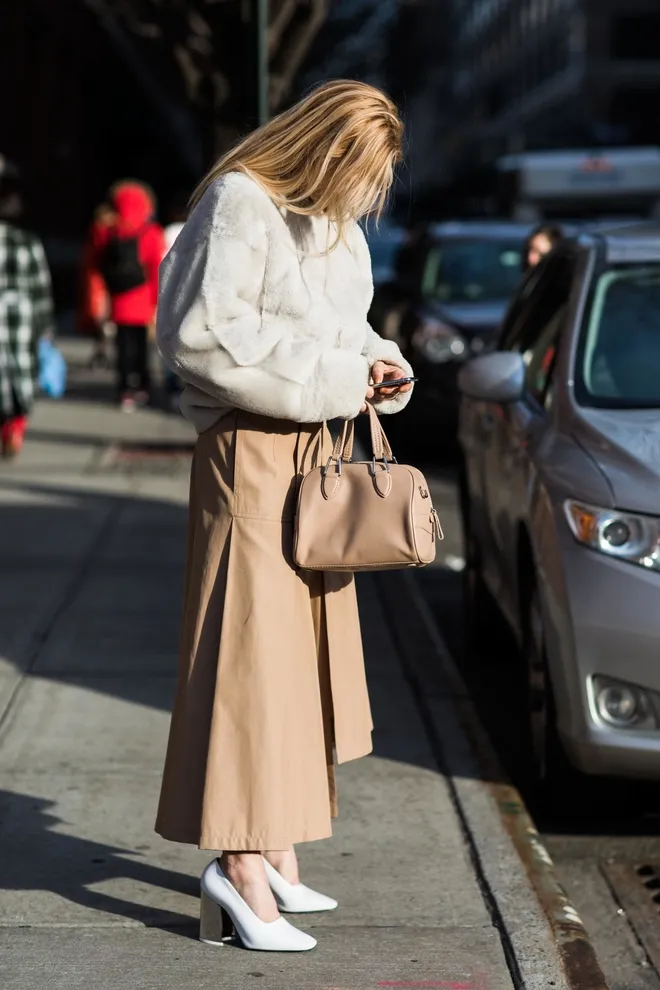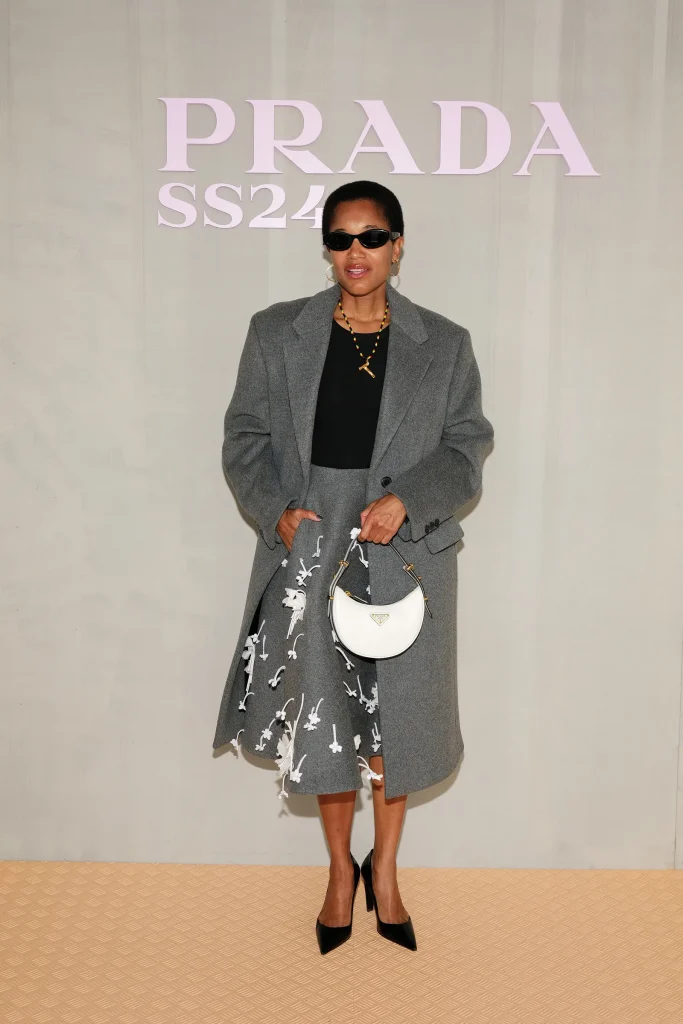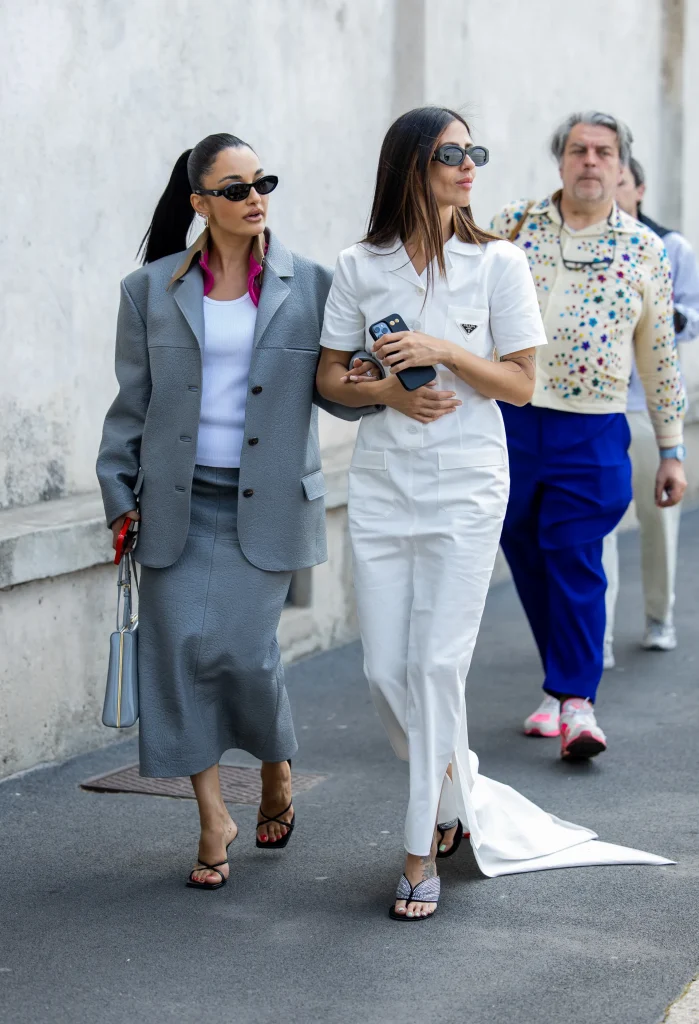Uncategorized
You Know French-Girl Style—Now Get to Know the Italian Version
All eyes are on Milan as brands like Prada, Gucci, and Ferragamo show their spring 2024 collections this week. The fashion set has touched down in Italy for all of the glitzy clothes (and parties), and while they are certainly fun to watch, there so happens to be a distinctive wardrobe among the locals. You already know French-girl style, but this is Italian-girl style.
Now, we know what you’re thinking: What exactly is Italian-girl style? While the French counterpart instantly brings up images of classic jeans and effortless button-ups, the Italian iteration is complete with loads of great coats, sleek loafers, and a good cashmere sweater.
We sought out five impeccably dressed locals to weigh in on what they think defines the country’s specific aesthetic. “It is minimal but with an inch of sensuality,” teases Sofia Carlotta Vigano, Vogue Italia’s senior beauty editor and digital director. Below, read on for their main takeaways—so that you too can channel an impossibly cool Milanese woman this fall.
Ada Kokosar, creative director and stylist
The Italian touch, for me, is a mix of many things: a sense of beauty; craftsmanship; elegance; natural style; harmony in shapes, colors, and proportions; unconventional and effortless allure; confidence; and fierceness.
I think the main drive for us Italians is definitely self-expression. This can happen in many ways, from a dash of vibrant colors to a specific attention to details. Accessories also play a role in creating a more personalized look.
Feeling comfortable is more secondary. For example, athleisure and casual dressing are not as successful in Italy as in the US. When we dress casually, it’s always with intent. [We wear] a well-tailored blazer, a soft silk white shirt, palazzo trousers in linen, a vibrant cashmere pullover, and how could we forget the iconic pashmina that we use for the breeze—the famous Italian colpo d’aria. Last but not least, and specifically very Milanese, the Friulana slipper is a must in every wardrobe.

Marta Oldrini, fashion market associate, Vogue Italia
In Italy, we [pay] great attention to made in Italy, and we often choose garments that we know have great quality fabrics. The typical wardrobe is a mix of garments meant to last—a camel coat from Max Mara, a cashmere sweater from Loro Piana, a loafer from Tod’s—and tees that aren’t based on seasonal trends. It often happens that these eternal clothes come from our mom’s or grandma’s wardrobes and are passed from generation to generation.
I was born and raised in Italy and learned to appreciate Italian style thanks to my mother and grandmother. Living in a city like Milan gives you the chance to get great inspiration from the people around you. It is always nice to see the style of different generations, from the youngest to the ladies.
Sofia Carlotta Vigano, senior beauty editor and digital director, Vogue Italia
I agree with Marta: We care about made in Italy, and we can definitely recognize if something has been made to last. Having a high-quality coat is a must, and [so is] an eternal bag that we usually inherit from mammas and nonnas or receive as a gift for Christmas or graduation. On top of that, as said, there is a little touch of sensuality—it can be lipstick, a belt that flatters the figure, an unbuttoned shirt. It’s a kind of sensuality that doesn’t seem effortless (like the French one) but playful and kind of ironic.
[We wear a lot of] coats, bags, and cashmere sweaters. I would add a blazer, a classic pair of jeans (neither skinny nor oversized), and some flat shoes—they could be ballerinas, loafers, or sneakers. We do, of course, wear high heels if we have some occasion such as a party or wedding. And when we have special nights, we prefer to have our hair done. Hair is a big thing.Eleonora Carisi, creative director and producer
Italian style is recognized all over the world because it is elegant and refined. Today’s aesthetics have remnants of Italian cinema in the 1950s, when men and women played characters that have remained in our memories thanks to the garments that transformed them into idols.
Today’s [Italian] Gen Z youth love vintage garments with an eye to the 2000s, [including] crop tops, goggle glasses, lots of mascara, and low-waist pants. Diesel, for example, today offers a collection marked by this theme.
If we’re talking about a grown-up generation more dedicated to work, we find cult pieces in our closets mixed with basics that have arrived in Italy thanks to chains like COS, Mango, and Zara: a nice pant from Peserico, a white shirt from Aspesi, a tailored jacket, and cashmere accessories for the winter that can last.
My style is distinctly influenced today by what I saw my grandmother and mother wear. My mom and grandmother had a historic store for 60 years called La Robe, where you could [find] sweaters, white shirts, suits, pants with lapels, and the love of the well-constructed total look. Three jackets, three pants, two shirts, and a coat—you’ve made your season. That’s all you need. This is my style: I like to use and reuse the garments I feel good in.

Tamu Mcpherson, founder of All the Pretty Birds
Italian style, to me, is all about having the right piece for every occasion. When I moved to Milan in 2005, what I noticed was that everyone had the perfect wardrobe for every location, whether it be the mountains, country, or seaside. In every demographic, women and men really play with their style and build upon the incredibly chic staples they’ve always worn. I love to see everyone from teenagers to older women mixing and matching local Italian designers with designers from abroad. They do it in such a way that looks pulled together.
Italians love their outerwear. They love a great jacket, a trench, a windbreaker when it’s necessary. They have a great outerwear game. They love their Venetian slippers, too—they can mix those slippers into any look. They are great with jewelry as well. Their jewelry tends to be bold and adventurous, and they mix and match family heirlooms well with more modern pieces.
Milanese style really influenced my own when I moved here because I also wanted to adopt the practice of having the appropriate wardrobe for each destination. I’ve learned to mix and match awesome staples with newer brands and brands from faraway places.

